It’s Friday and the weekend is almost here. I think I am finally settled back into my routine because I just spent a couple of hours scanning a bunch of B&W film and answering some e-mails. As you may have seen in the video I posted last night, my Leica MP arrived and even with it’s minor paint flaws its one sweet camera. I tested it out with a roll of Ilford Xp2 and out of 36 frames had about 30 keepers. The RF is spot on which is great as I think the camera is old stock, possibly 4 or 5 years old. BUT I did get a great deal on it so I can’t complain. About 7 years ago I had a black paint MP and really enjoyed it. When the M8 came out I had to sell it to fund the M8. I really missed the MP but at the time I REALLY lusted after the M8. As much as I love the M8 and M9 there was something about the MP that got to me and pushed my buttons the right way.
So today I am once again a proud owner of a Leica MP and hopefully nothing ever happens where I have to sell it. I will have a full review up soon, but as you can probably guess it will be a positive one, ha ha.
Today I wanted to talk about a GREAT B&W chromogenic film that performs really well and can be processed at any drug store. Sure, the films like Kodak Tri-X and Fuji Neopan are awesome but many of us do not live near a lab that can process those films and some of us do not want to develop our own (though many do, and LOVE it) or send them out for processing. Ilford XP2 Super 400 is a C41 film, meaning it is not really a true B&W film like Tri-X or Neopan. But I have to say the results are really good. Another film similar to the Ilford is Kodak Pro BW 400 CN but I slightly prefer the Ilford to the Kodak. I never seem to get really good results with the Kodak but maybe I have not shot with it enough.
Last night I loaded up the MP to test it out and to make sure the RF was aligned correctly since it was an old stock camera. It was late afternoon/evening and I had the 50 cron attached. There is just something about that cron that I really love and it shows its character on the M9 as well as film. It’s one lens that NEVER gives me any problems. I have had rotten copies of the 50 Lux ASPH, 35 Lux ASPH as well as summarits but never a bad cron! Anyway, if you are new to film and want easy B&W that may not be as good as the real deal but close, then shoot a roll of XP2 and take it to your drug store for processing. I pay $2.15 for them to process my negatives and then I come home and scan them on the Epson V700 (video review soon) which I am finding to be a GREAT film scanner ESPECIALLY when used with Silverfast. When I compared Silverfast SE to Epson Scan it was not even close. Silverfast gave me incredibly sharp results while the Epson software was giving me soft scans, even with USM turned on. In any case, I am still using the scanner and the review should be up by Monday.
OK, so how about some images with this film?
We went to a VERY small town for an event that my Uncle was attending and it was quite the experience. I probably should not have driven the DeLorean with the freaking flux capacitor turned on because it brought us back to the 50’s.
We left this event after 10 minutes as we thought it was something different than it was. So we decided to take a walk around the town…
My son found an old water pump and what came out did not look to be very tasty 🙂
found an old barn with some character…
and my son and his friend got to relax for a while…
On the walk back to the car I snapped anything that looked interesting…
I tried being sneaky but my son knows exactly when I am making my move to take a shot!
So as you can see, Ilford XP2 is a GREAT film that is easy to have processed at any drug store that does film. Highly recommended for those who want great B&W without the extra costs of the real deal. I’ll still shoot Tri-X and Neopan and some Ilford B&W but I will also always have some XP2 on hand. Great film! B&H even sells this film in a 50 pack 🙂
[ad#Adsense Blog Sq Embed Image]

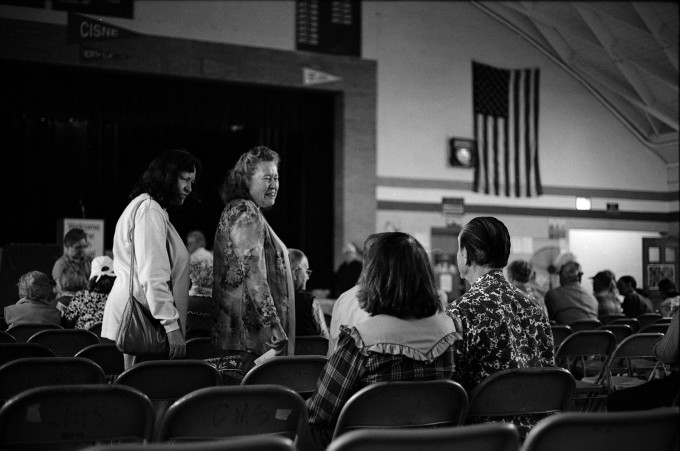
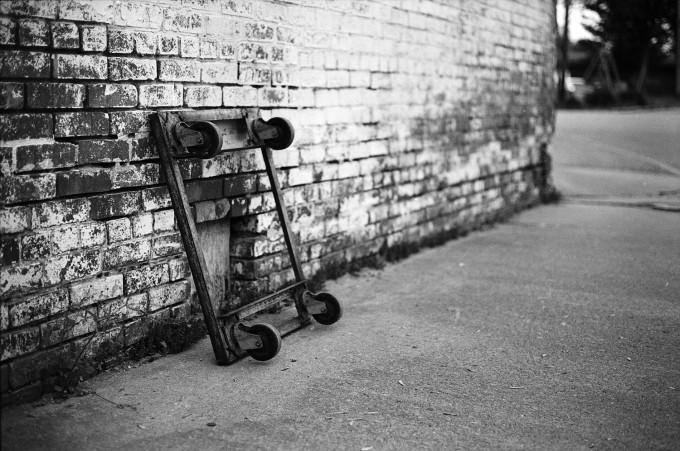
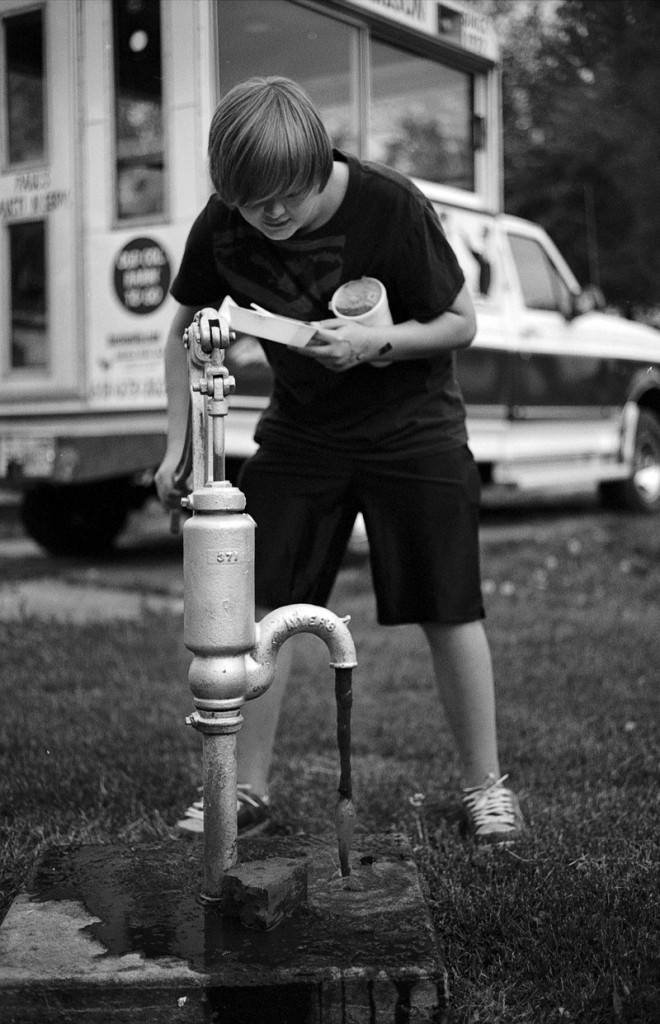
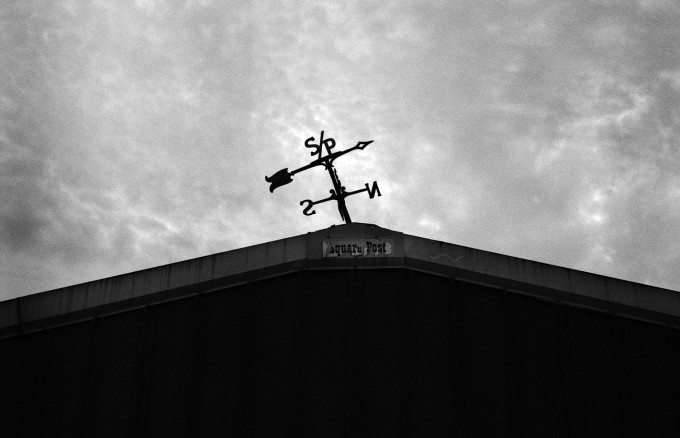

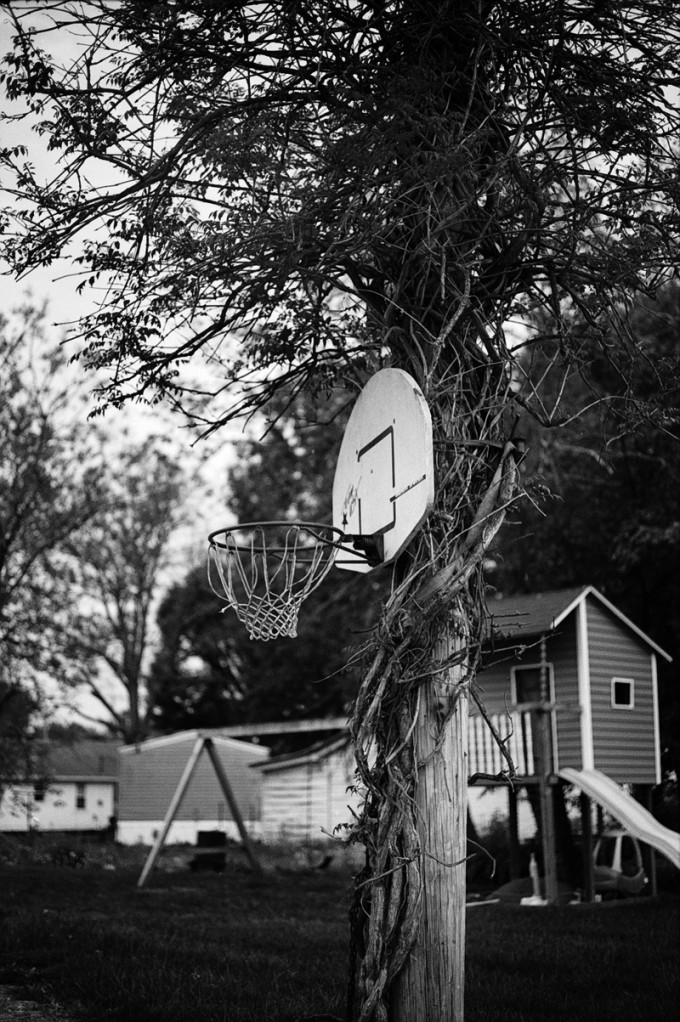
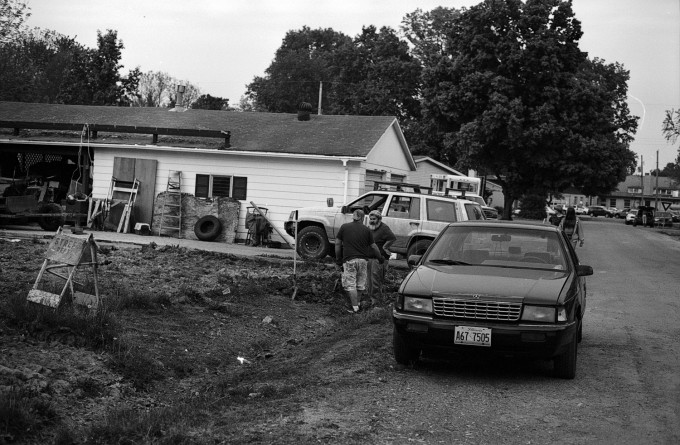
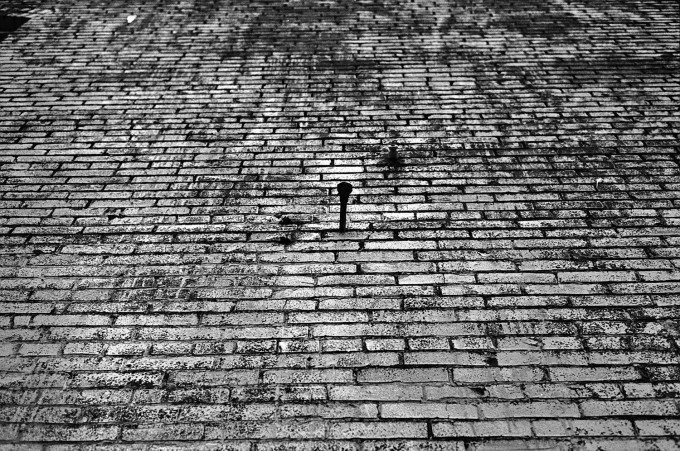
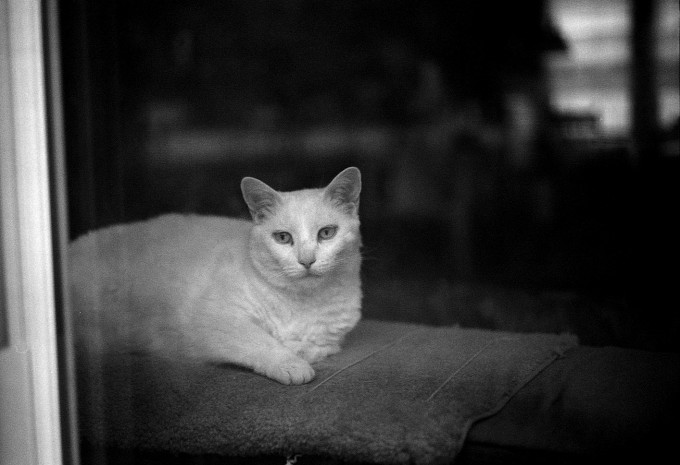
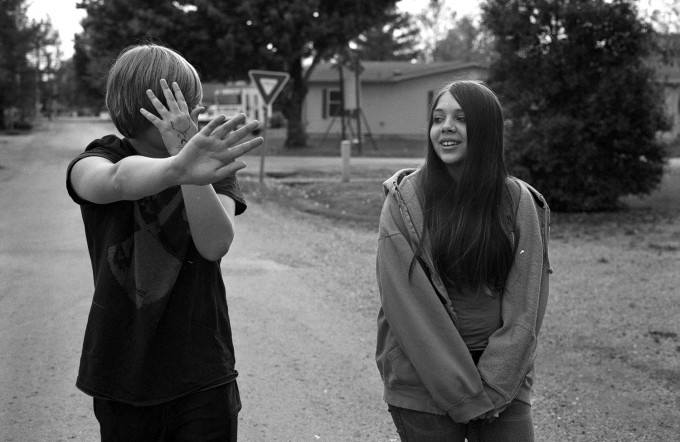

Love the bricks above the kitty. I love how sharp and versatile the c41 b/w films can be.
I’ve been using XP2 super for quite a while now and in good light I usually load it into my Olympus Trip 35 which is a staggeringly good street camera/film combination. I rate it at 320 iso. The Trip 35 uses zone focussing, needs no batteries and has zero shutter lag with auto metering, try it! IMHO you would love it for your kind of photography.
Very nice pics
Fqantastic quality, all pics are sharp and crispy
Loved it
Q: If you are running XP2 @ 200 ISO do you adjust the Sunny 16 Rule accordingly or treat it the same as 400 ISO film?
Would you set your shutter speed at 1/250 or 1/500?
Thanks
ET
Well, this is too late to do you any good, but might help someone else:
If you want to expose any film at EI 200, then in bright sun you would expose it at 1/200 or 1/250 at f16.
Just got myself a Zorki 4 with a Jupiter 8 ( 50/2f) and found a roll of XP2 in my drawer that was from 2001! So I’ve shot a few shots this afternoon, but it was overcast, ( and UK winter) so i’ll resume tomorrow in brighter light and see what happens. I’m not to bothered about pristine, or pin sharp images, if I want that I’ll use my Canon 600D with a prime! Hopefully the film will still give me usable images, even if it is over a decade old.
I’ve also got a Yashika J rangefinder which I picked up on a market for £9 about 10 years ago, the focussing isn’t too easy, and the body lets light leak in, infact there’s camera apps that reproduce the same effect I love using, so I’m going to throw a roll in that this week too, and see what happens.
As much as I enjoy using my Canon 600d ( usually with a Tamron 17-50mm 2.8) and getting great images from it, I just wanted some of the warmth and uniqueness I used to get using my OM-1, so I’ve picked up so old glass primes and adapters to use ( Nikon 50mm 1.8 E, Soligor 28mm 2.8 and a Mamiya sekor 135 2.8) I’m also going to try the Jupiter from my Zorki ( via M39 + M42 adapter) on my Canon DSLR, if the results prove interesting I will post some links
very late to this thread…XP2 is a very good film and a good solution for those not interested or able to process and print ther own work…It took me some time for me to warm up to it being a TriX and rodinal shooter but I’ve come to like it…and he process of scanning then outputing to fine art inkjet prints is a very good way to maintain personal control over your work but not have to have a darkroom…but of course there is a learning curve for scanning and printing with inkjet as well. One thing Ive ofund abotu XP2 is that it has rather flat characteristics not very contrasty…thus I find it works best in contrasty light and not as great in flat light…but of course this can all be worked on in post. I also shoot a lot of pinhole with my 500cm and a pinhole bodycap….i find that XP2 is a great pinhole B&W film. If you miss that high acutance edge sharpness of trix and rodinal you can come close to it in silver effex pro.
I too overexpose my XP-2 by 1/3 a stop. However, I prefer Fuji Neopan 400CN over the Ilford offering. It too, is a C-41 process B/W film.
Russ
Thanks for the reply Steve. So to get this straight, if I were to move ISO dial accordingly i can get faster shutter speed (im using the new 50 2.5 Summarit)? Ive searched high and low in all forums but couldnt get any answer to that. Anyway U were the reason for me buying myself a M6 🙂 . Now that im back on film (still have my 5Dmk2 for my wedding gigs) I feel like I just started photography all over again 🙂
Moving the ISO dial will only affect the meter, you then get to choose whether you use a higher shutter speed and/or a narrower aperture. Obviously it doesn’t affect the film, nor does it affect the C41 processing for the film. You change change the ISO setting from shot to shot if you like, or it might be easier to just shoot manual and ignor the neter. Come scan time you might need to adjust the scanning settings slightly to raise the exposure (if you shot the frame above box speed) or lower it (if you shot under box speed).
Hazil, I have shot xp2 from iso 200 to 800 with good results, and have mixed the iso on the same roll with no issues. Xp2 is the only film I know where you can do this and get great results.
Hey guys. SOrry if this is a noob question. I just got myself a M6TTL and currently having XP2 in the camera. Have not processed any rolls yet since like the late 1990s. Let me get this straight, if i need a faster shutter speed, can I just dial up the ISO at the back of the camera? Since the XP2 is 400, how will the picture turn out? I am so new to film. Thanks guys
I LOVE xp2 (in a platonic way…) it is my standard film in my leica m6 and in my hasselblad 500cm. I have exposed it as 50 iso (accidentaly) and I normally expose it at 800 iso and it works very well and is very forgiving. However, I have it c41 developed at one hour services, and there it does depend on when they have replenished their chemicals.
I’ve started back into the film thing (after like 20 years since HS…) with a Bessa R2M and a cheap used Leica 50mm f/2.8 Elmar-m (cheap for Leica…) and I’ve enjoyed using the Ilford XP2 Super. Sure, true B&W has it’s advantages but this gives me the “semi-instant” gratification of 1 hour photo labs. Then I convert it to B&W when I scan it with the Epson V700. So far so good. though Rick M. above is right about scratches and such. I have had no problems at all but I let a friend of mine test out her dad’s old Pentax with a roll of Ilford and she took it to a local CVS who scratched up the film to no end. It’s not the camera since it’s not all the way through the entire roll. Sooooo yeah…I guess that’s the risk of the 1 hour labs.
But so far I have had great luck with this nifty film. I have some rolls of TMax and Tri-X as well as Ektar for color and even the Kodak B&W film but this might be my main go to film for consistently pleasing results!
Thanks Steve (both for real and sarcastically) for getting me back into film…
🙂
Donald,
Ilford XP2 is an Ok film, but it’s not real B&W. It just looks B&W. Chromogenic processing is a color process. Wonder how often Walgreens replenishes it color chemicals? Any developing that I have done at Walgreens was terrible. Lot’s of scratched negatives and poor developing. But, the dingbats can’t see the difference. You should be able to see the difference. If you want to see great B&W shots, then use B&W film. Preferably slower than ISO 400 for less grain and finer resolution. I have been using ISO 50 and ISO 100 films for high resolution black and white and the results have been great, especially if you use the appropriate developer (not C41 process). Any of the slower commercially available B&W films are good. ISO 400 films appear to be very grainy to me. I have used slow ISO Kodak and Ilford B&W films with success. Others will do, as well. Buy a cheap developing tank and some chemicals and develop your own B&W. When you learn the process, find the right developer and developing time, you may get some great B&W shots. And, if you want to make good sized enlargements, you won’t see a grainy mess. The easy way is usually not the best way. You can change ISO mid-roll by the use of filters and changing the metering ISO on you camera in between shots. Takes a little practice. If Ansel Adams was alive today, do you think he’d take his B&W film to Walgreens to save time? I have to admit that I tried it. It didn’t work. If you want to save time, buy a digital camera and don’t use film. B&W conversion of color digital shots is pretty good. Good luck.
If this is what you get back, Stever, from YOUR $2.15 processing at Walgreens, then I’m afraid pro-lab-be-damned EYE am going to have to give this C41 film and MY Walgreens a shot. I love the look of these shots. Plus, there again, is that 50 Cron look. Which is going to haunt me for the rest of my life if I don’t get my 50 cron back from Bel Air Camera, which, I’m here to announce, is going to happen. I know the 50 cron gets a weird bokeh under certain circumstances. But I’ve been looking at 50 cron or Leica 50 F2 lens pictures my entire life. You can look at iconic shots from Vietnam or W. Eugene Smith or just about all the shots I saw in encyclopedias and old geography books and magazines when I was growing up in the 60s and 70s, You can find that same bokeh. Along with… the iconic way this lens “draws.” Which happens to MOVE me. I know this Planar has great bokeh and is tack sharp and doesn’t distort. But I don’t, in my head, have any idea how that lens draws or what the sum total of it’s particular look or signature would be. Anyway.
Question about this Iford film, which I can probably get answered somewhere else, do they make a lower ISO of the same stuff and has anyone used it. Although, I have to say, the idea of being able to change ISOs mid-roll is just amazing. Great shots, Steve. You “get” the 50 cron.
Holy cow Scott! Really? I can’t wait to try some now. I always thought with film we were stuck with whatever iso we had in. I normally shoot tri-x for black and white but would love the flexibility of what you are talking about above. This means we effectively have a film that that has a manual iso (like digital) that we can ratchet up or down depending on the light? This would be heaven for me!!
Scott, thanks for clearing that up for me. I never knew about the difference. It makes sense to me now. I will order a few rolls of the Ilford to test it out. Thanks!
Elaine,
That’s the difference between C-41 B&W films like XP-2 and regular B&W films like Tri-X and HP-5. C-41 processing (whether it’s Walgreen’s or a custom lab) is always the same. You shoot XP-2 with whatever meter setting you like, or multiple meter settings, and then take it to Walgreen’s and say “Please develop this”. Film doesn’t care, Walgreen’s doesn’t care how you shot it.
(Actually, if you tell the Walgreen’s guy that you shot it at 200, he will probably have no idea what you’re talking about.)
Be aware that some of the exposures in my little experiment probably won’t look very good. But some will. That’s the point of the experiment.
Regular B&W films like Tri-X or Plus-X are completely different. If you change the exposure you have to change the developing time. And you pretty much have to shoot all the frames on a roll at the same speed.
Okay, so if I set this film to ISO 200, I don’t tell the Walgreens that it needs to be processed at ISO 200 instead of 400? I just let it be developed normally? Does that include all of the ISOs mentioned by Scott? Same processing at same ISO though it is an ISO 400 film? I’m confused.
Regarding longevity, I just scanned some XP-2 (not XP-2 Super) that was processed about 10 years ago and it looks fine. It doesn’t seem to attract dust like conventional b&w films.
Regarding exposure, try this: Find a subject with lots of tones and detail. One of your old barns/houses would be perfect. Make a series of exposures at EI 50, 100, 200, 400, 800, 1600 and scan them. The lower speed ones will be denser, lower contrast and less grainy. The higher speed ones will be the opposite. (the 50 and 1600 exposures may be outside the envelope, but maybe not.)
The point is you can get different kinds of images on the same roll of film, and different exposures may be more appropriate for particular subjects. I love this film!
Personally, for general photography I like EI200.
Well all I can say about that is none of the XP2 scans above had any dusty removal (No ICE) and I did not clean them. My old Tri-X negs are loaded with dust and scratches so hard to say. I do not think that XP2 is any more fragile than TriX. But I could be wrong.
Hi Steve. Agree with you on the xp2 epson v700 combo. Great and easy way to get back and shoot film! Question regarding xp2, I have noticed that you need to clean the scans a fair bit more than other true black and white films. I have seen on some forums that xp2 emulsion is a bit more fragile than other films and may scratch and not have as longevity as other films ( including k 400cn). Just wandering what your thoughts are on this, as you use the same film and scanner combo. Cheers
I have used Ilford XP-2 for many years and it is still my favourite B&W film because it is the most flexible I know. Normally I set the camera (M6, M7) to 200 ISO, which delivers finer “grain”, but I have used it on different occasions between ISO 50 (!) and ISO 800 and hav got always very good results, and the drug store laboratory developed the film only on standard development. If you don’t believe, make a try and/or look for the Ilford hompage and the XP-2 data sheet. Also there are mentioned these possibilities(link below):
http://www.ilfordphoto.com/Webfiles/20061301945161573.pdf
I have used also Kodak Pro BW 400 CN, which is similar to XP-2, but with results, which cannot compete with the Ilford XP-2.
I had XP-2’s developed by professional laboratories, but with no difference to the drug store laboratory around the corner, because C-41 is a so standardized developing process, that under normal circumstances you get the same results. My experience since about 20 years.
I like FP 4 Plus, Delta 100 and 400 also, but XP-2 beats them, due to the high flexibility: From sunshine at noon to nightlife at midnight, it works. Especially now I prefer this film, because mostly shooting with the M9, it can “wait” in the camera until the analogue desire pops up again, minimum one or two times per month and than it can be noon or midnight, what ever.
Good light, good focus!
Film is georgeous! Keep it up Steve. Great photos.
No, the 50 is easy to turn. It’s inside when I’m looking through the viewfinder, I have a tough time lining up the focus. It’s probably my eyes.
I used Kodak 100 TMX film. I will ask them to push it to 400 as I shot it at 400 by mistake. No big deal. It’s old film anyway. I just want to see what came out.
This whole film thing again is really testing my memory.
Today I used the M8.2 at the Dog Park again. Oh boy! What a task, trying to focus on dogs that are moving. I had the 35 cron which translates to a 47mm. I’m doing a bit better, but I suck at getting the exposure correct. The time of day is too bright, plus all the dogs are either black or white. Weird.
I remember when manual was the only way, and I did fine. Now, being older, it’s exhausting. LOL!
P.S. Steve people may not know what a ND filter is…
A ND filter is a neutral density filter which sounds scary but isn’t. For example, let say your shooting outdoors and you have 800 iso film because you were shooting a band last night. Well if you want to shoot at wide apertures you may need shutter speeds higher than your maximum as most M film bodies only go up to 1/1000 th of a second.
So lets say you meter, and you get 1/1000 th at f/ 4.0. With a two stop ND filter, you can now shoot that same picture at 1/1000 th at f/2.0 with no change in contrast or tones!! A neutral density filter is basically a pair of sunglasses for you lens!
Hey Elaine, why is the 50 hard to focus? Do you mean the focus ring is stiff? My vey first roll through a manual Leica was the same. It did not load! But these days it never fails. Just make sure when you put it in to feed it between the spool before closing it up.
If you want to shoot wide open outdoors with faster film then you would need an ND filter. Im getting ready to order one myself. If you exposed your 100 film as 400 you may have some serious underexposure going on when you get your results back though. What film did you use?
Hi Steve,
Have you even thought of having to have two bodies? One is loaded with a high-speed film (say, ISO400) and another is loaded with a low-speed film (say, ISO100). I am a slow shooter. My M6 is normally loaded with Ektar 100 (sometimes, with Ilford HP5 Plus400) and I have rarely finished a roll on a normal day. So, at night my M6 (with a 50m cron) with such the low-speed film loaded becomes, umm, unusable. I am not that wealthy (and not a pro), so an idea of having two M6 bodies is …. just a thought.
Thanks for your thought
Well, I’m going to put a ND filter on the camera so I can shoot at F2 sometimes outside. I figure this would be the way to do it, right?
Steve, that is exactly what I’m using on the M6; a 50 cron. It’s an older one. Kind of a pain to focus. Not as easy as the 35 ASPH one. I haven’t developed the film yet. I set the ISO to 400 though it was 100. Oh, and the first roll that went through the camera, I didn’t put through right. Ugh! What a dummy! This all-manual thing takes some getting used to!
@ Efix, thanks for the comments. I have not tried to overexpose XP2 yet but will try that next time I shoot it to see what happens. My cam was set to 400.
@Renze, thanks! Ill have to give it a shot at 200 as well. Should be interesting 🙂
@Calvin, I most certainly will!
@ Elaine, I used the 50 Summicron which is really the only lens I use these days. Keeping it simple. Thanks!
@James, I really hope to have the V700 piece done this weekend. Thanks!
@Elaine, looks like Renze answered you 1st 🙂 Enjoy that M6. Did you get a roll through it yet?
Elaine, you mean me? I just set the ISO dial to 200 to ‘fool’ the meter and overexpose the film.
When shooting outside in daylight, do you lower the ISO to 200 on the film camera or add a ND filter?
Great pics Steve. Really like the textures in pic #2.
I’m thinking of picking up a V700. Would love to see what settings you’re using as well.
TGIFF~
What were the lenses used for these photos, Steve?
Your MP camera is SWEEEEEEEEEEEEEETTTTTT!
You must be very happy right now.
Steve
When you review the V700, let us know what settings you are using. Cheers. Bought a roll of XP2 last week, but then found out it was way out of date, and they didn’t have any more.
I shoot my XP2 at iso 200 during the day and at iso 400 when it gets dark.
Very fine grain when you need it. Glad you like it Steve!
[img]http://farm5.static.flickr.com/4069/4385512068_0fec0a141c.jpg[/img]
Hey im going to Austrailia and taking my pentax K1000, i like to use Ilford Xp2 for my shots, but was thinking if 400 to fast for such bright conditions should I set thee camera to 200, please advise. Steve
Steve, those pics turned out very nicely. The “back to the 50’s” is a great shot!
I had got the hint to try to slightly overxpose XP2 in order for it to show its full potential, so I set my Yashica 35 GT to ISO 320 instead of 400 – I haven’t shot all frames yet so I can’t say how it turned out. How did you handle the XP2? Did you overexpose it, or did you handle it like standard 400 film?